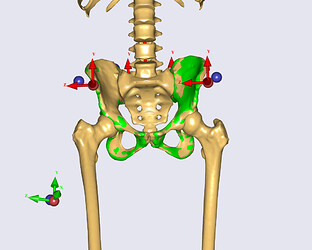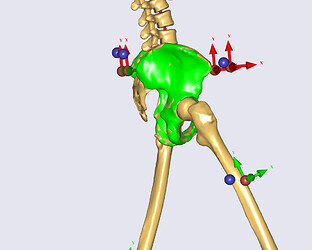Hi Kate,
Heres a little update as we have started investigating what is going on and we think we are closing in on the problem.
Our hypothesis is that the morphing is mixed between the leg pelvis and the trunk pelvis.
The model is made up of multiple different bodymodels that are put together and the TLEM2 dataset includes a pelvis while the lumbar model also includes a pelvis. For completeness there is a option to switch between the two pelvis' dependent on what users are interested in - one might be keen on the complete TLEM2 and others might be interested in more detailed lumbar spine.
We are still looking into the issue to see if we can give a more elaborate answer, but we believe that some of your points used the Scale_Trunk_Pelvis where they should have used the Scale_Leg_Pelvis function instead.
Here is an image where I switched the scale function on the CT.Ref2 u0,ux1, ux2 points.
Here is a snippet of what we changed:
AnyRefNode Ref2 = {
...
AnyFloat u0 = ...Scale_Leg_Pelvis(p0); //scaled source
AnyFloat ux1 = ...Scale_Leg_Pelvis(px1); //scaled source
AnyFloat ux2 = ...Scale_Leg_Pelvis(px2); //scaled source
We will keep you posted when we can give a more full answer
Best regards,
Bjørn

